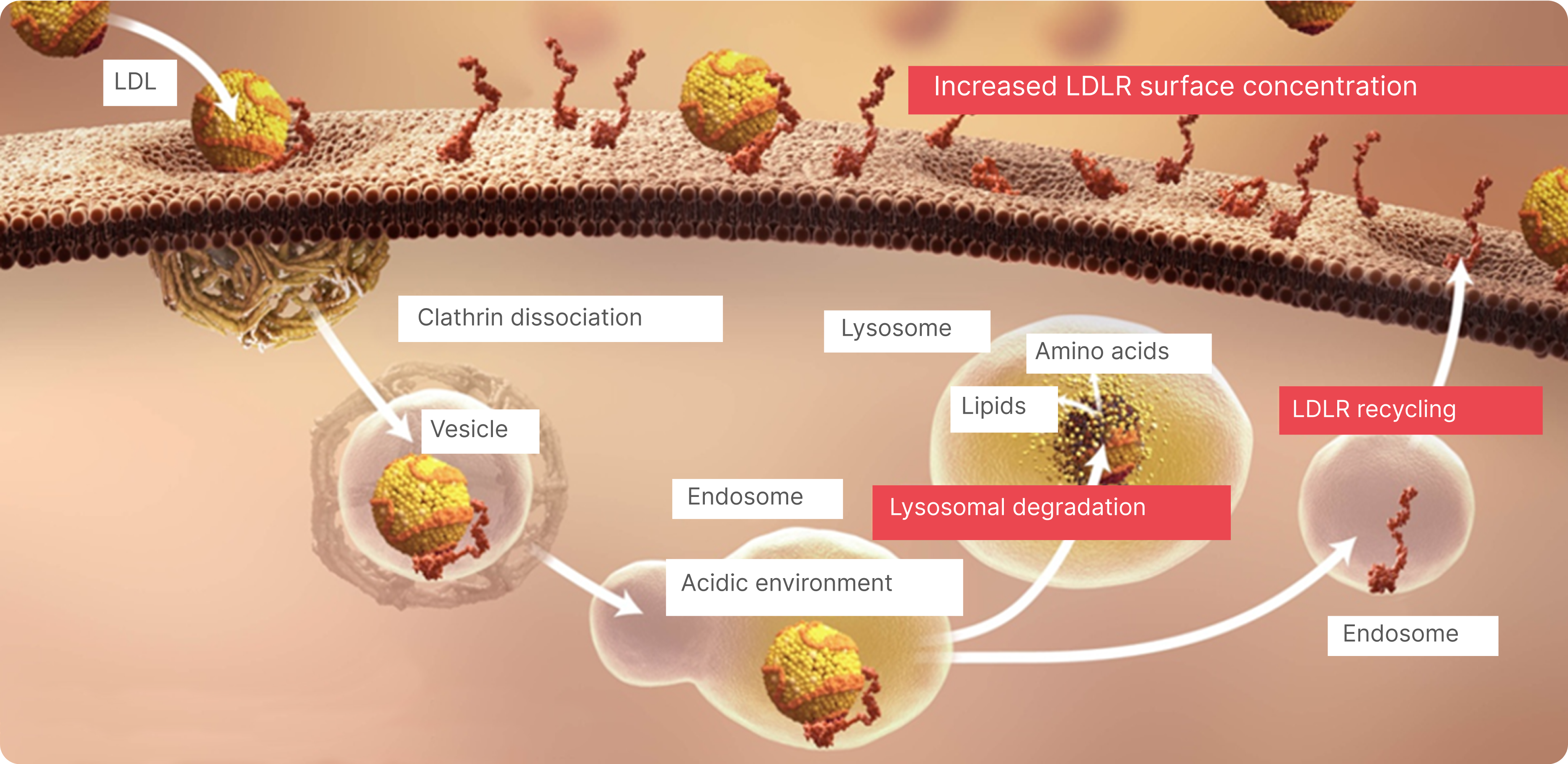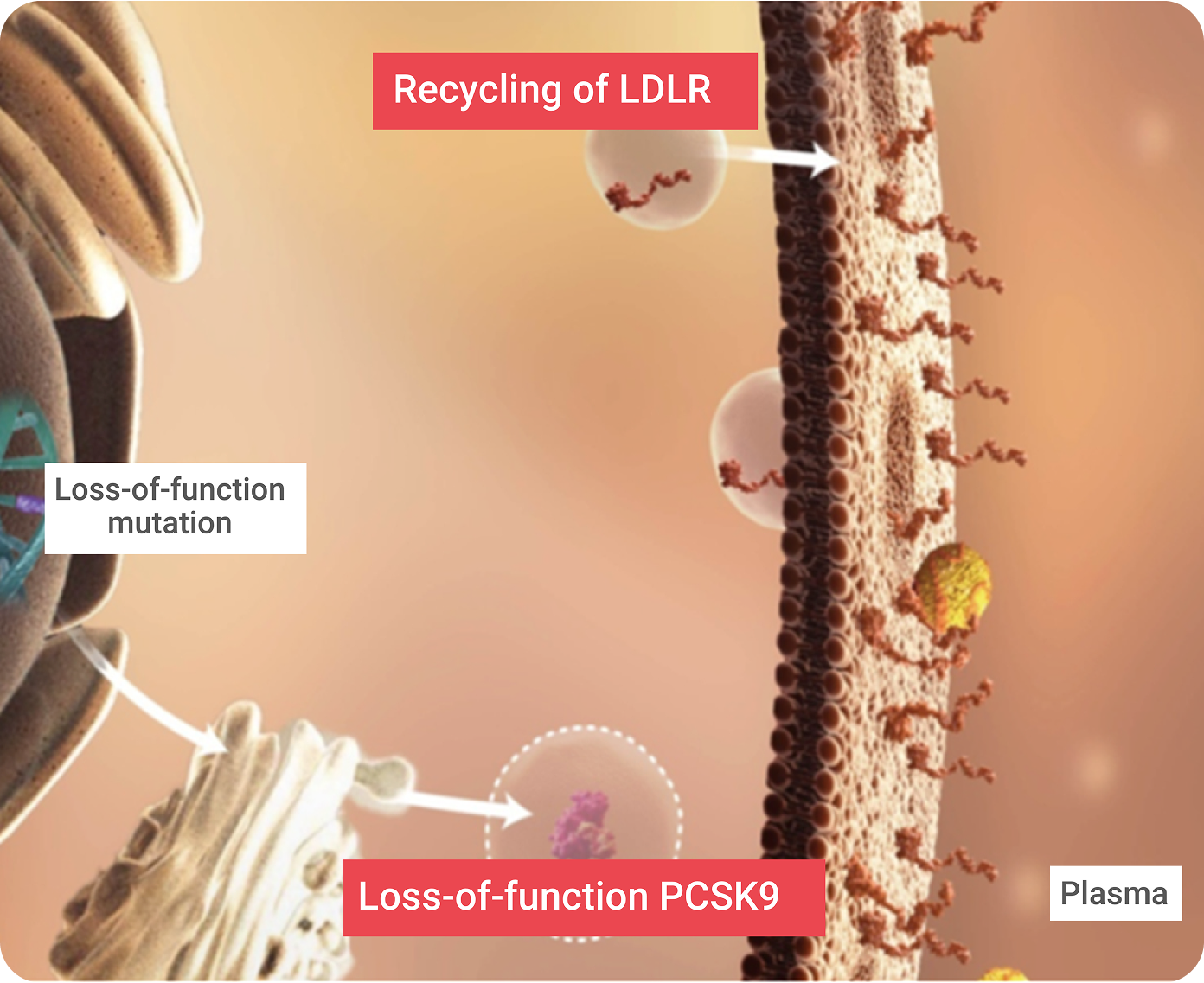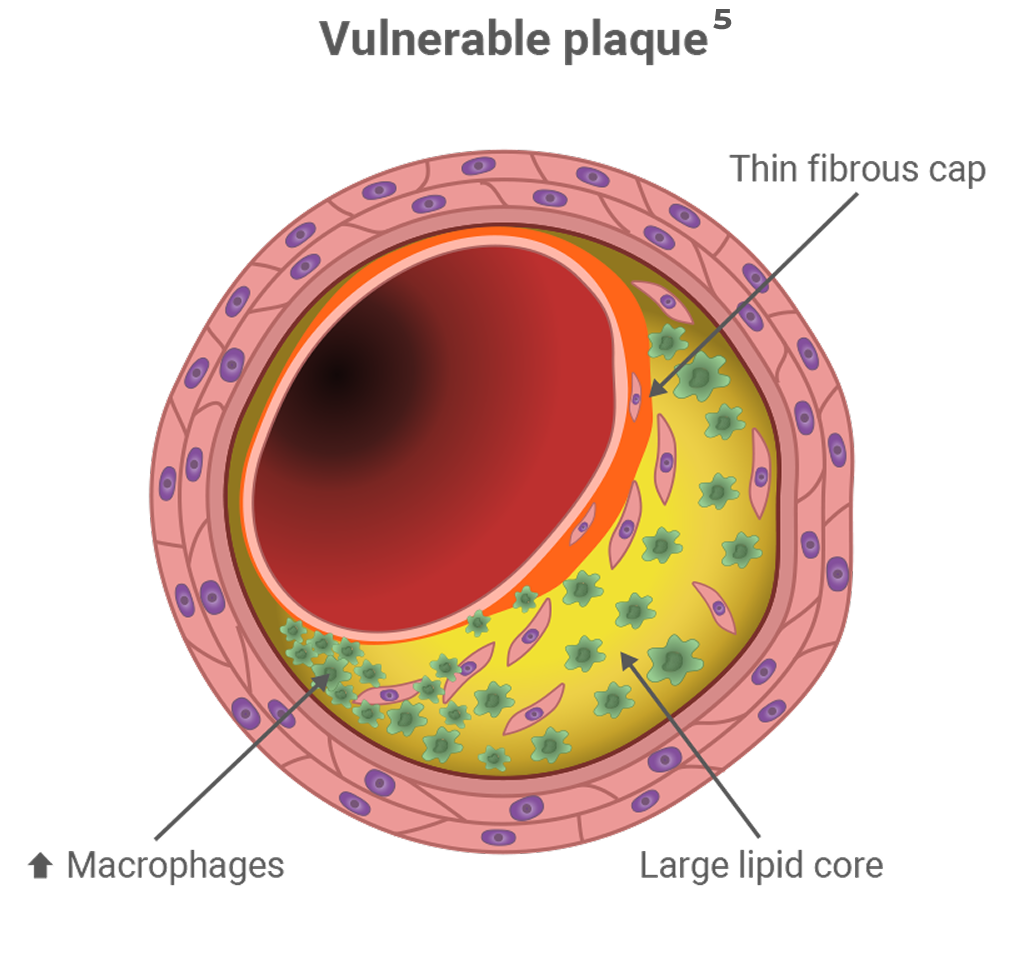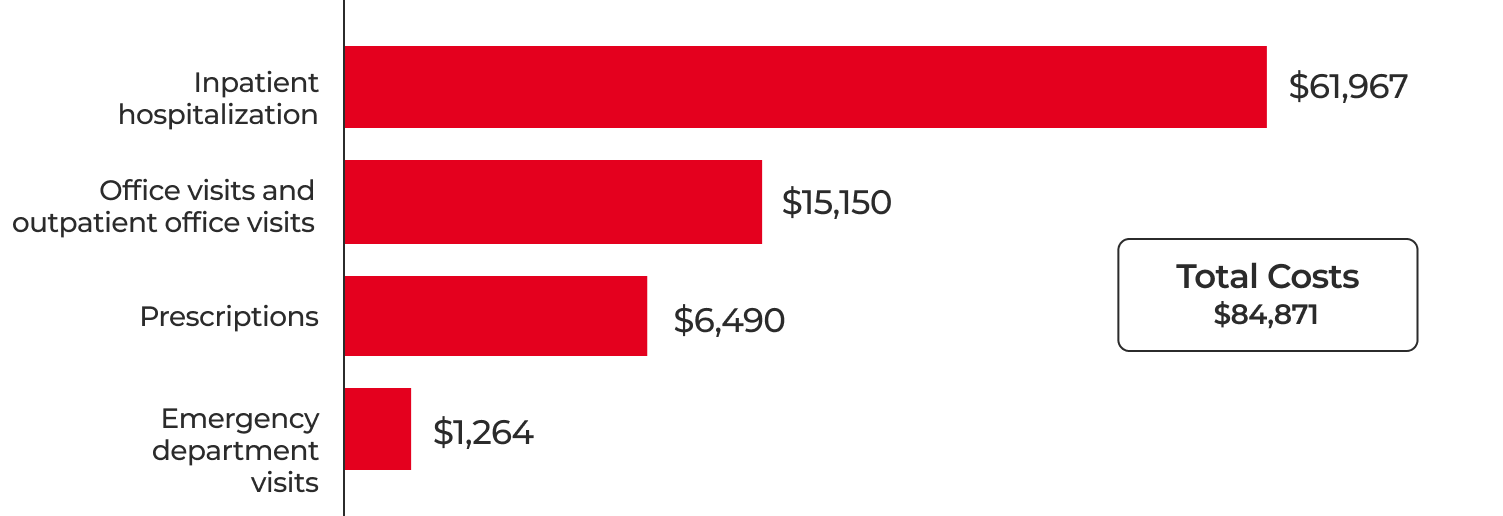If you click “Continue” below, you will leave the current site and be taken to a site maintained by a third party that is solely responsible for its content. Amgen provides this link as a service to website visitors. Amgen is not responsible for the privacy policy of any third-party websites. We encourage you to read the privacy policy of every website you visit.
Atherosclerosis develops in a multistep process:1-5
At lower concentrations of LDL-C within the arterial intima, there is a lower chance of accumulation and retention in the walls of arteries. As the concentration of LDL-C rises, the probability of retention and risk of atherosclerosis development increases in a log-linear relationship. Epidemiological studies have shown that prolonged hyperlipidemia increases the risk for CV events.
A large registrational study further substantiated the benefit of lowering LDL-C in patients who had a prior myocardial infarction. Patients who achieved a ≥ 50% reduction in LDL-C demonstrated the lowest rates of additional cardiovascular events.
The SWEDEHEART registry study included approximately 40,000 Swedish patients admitted for first or recurrent myocardial infarction between January 2006 and December 2016 with a median follow-up of 3.8 years, looking for changes in LDL-C levels and incidence of CV events. LDL-C reduction after the index myocardial infarction event was associated with a reduced incidence of major adverse CV events (defined as the composite of CV mortality, Ml, and IS) and major vascular events (defined as the composite of CV mortality, Ml, IS, and coronary revascularization).
ACS = acute coronary syndrome; IS = ischemic stroke; MI = myocardial infarction.

















